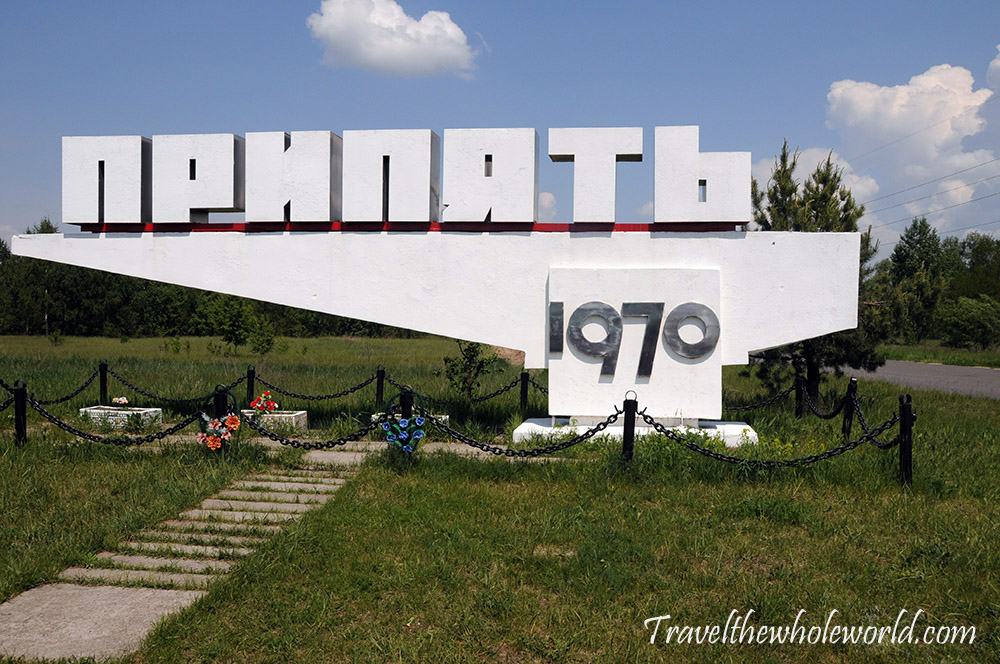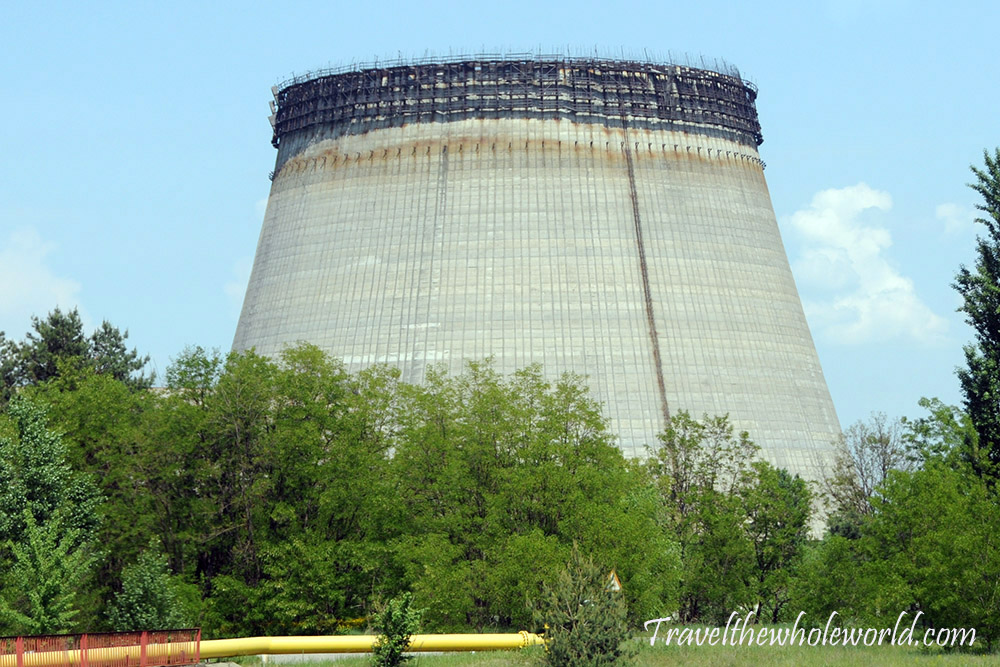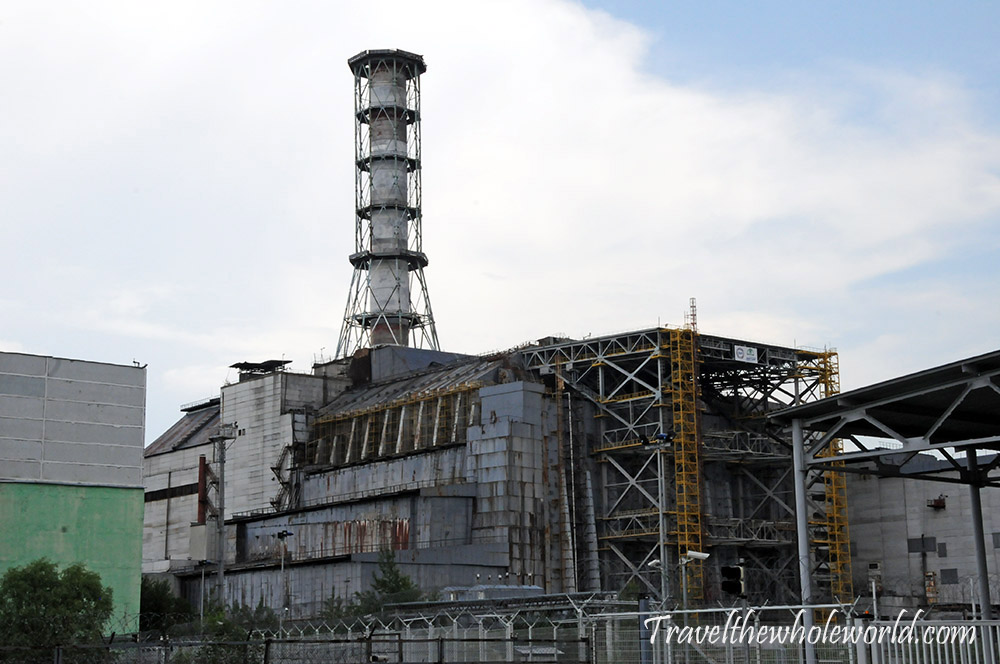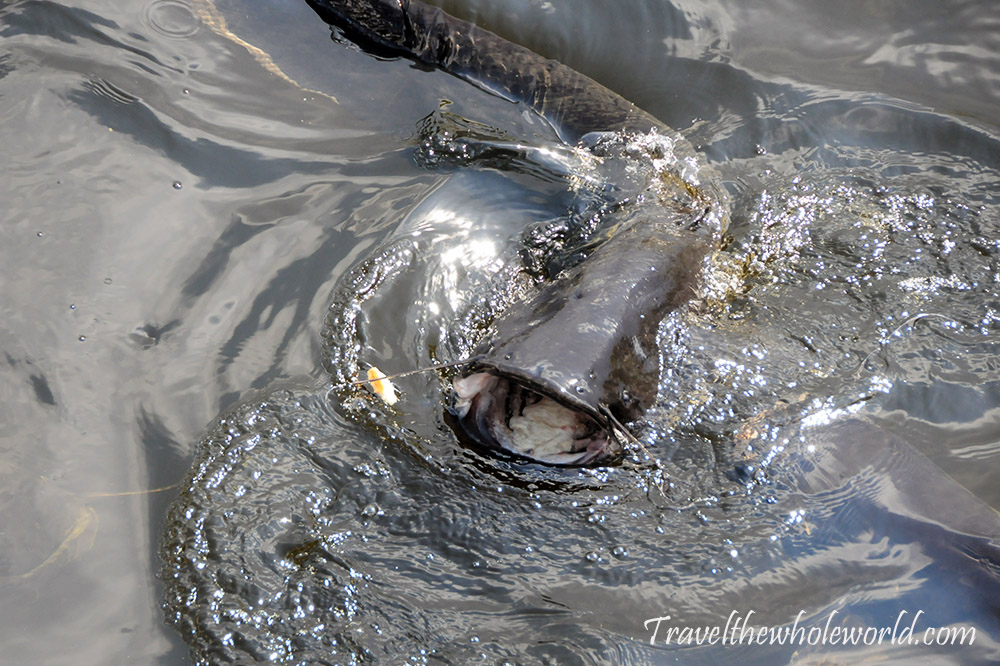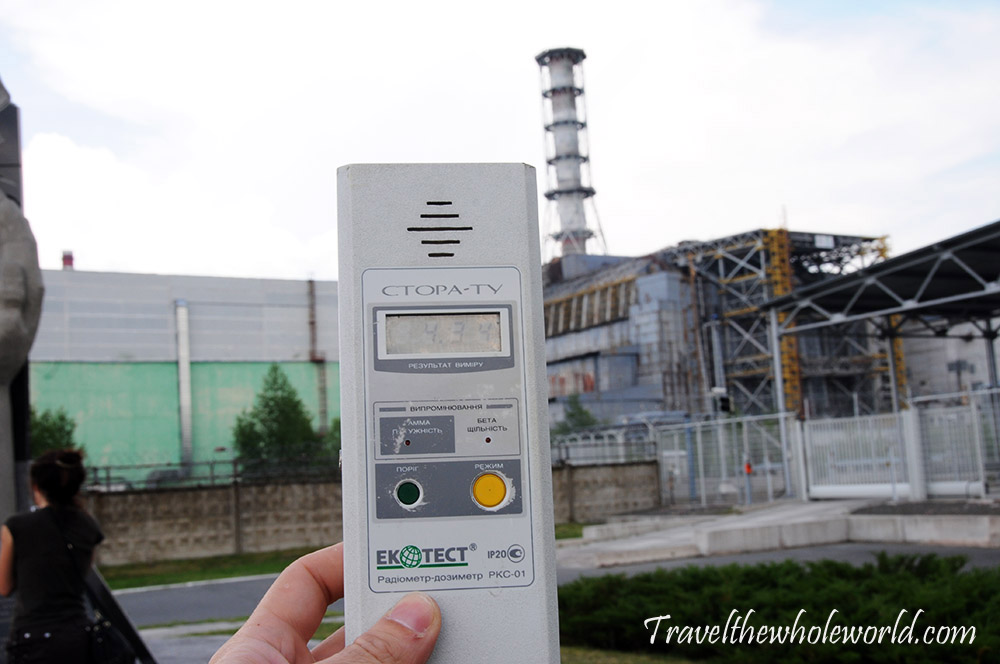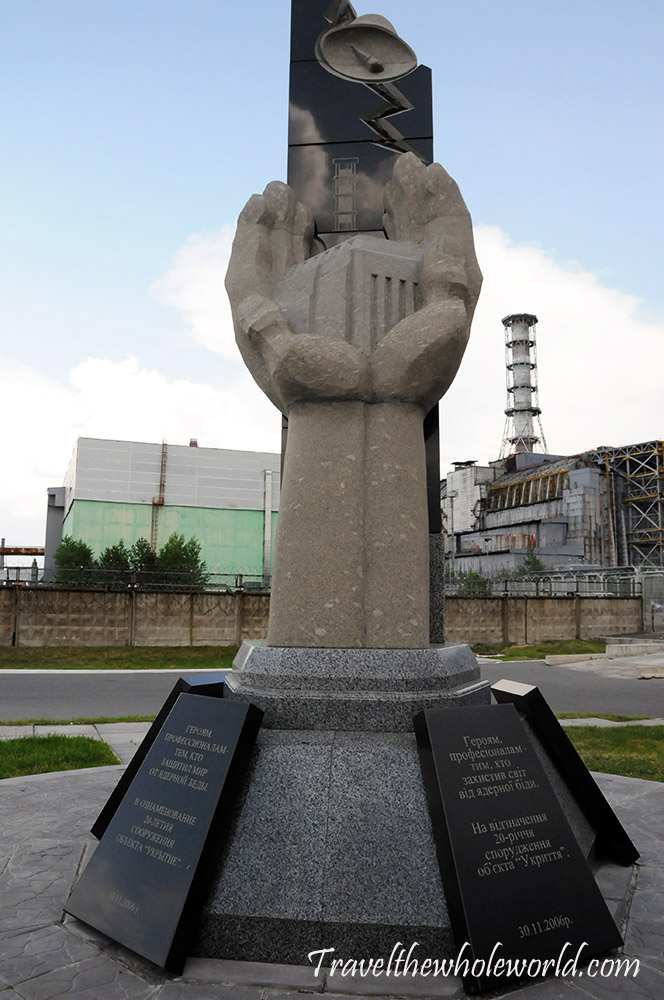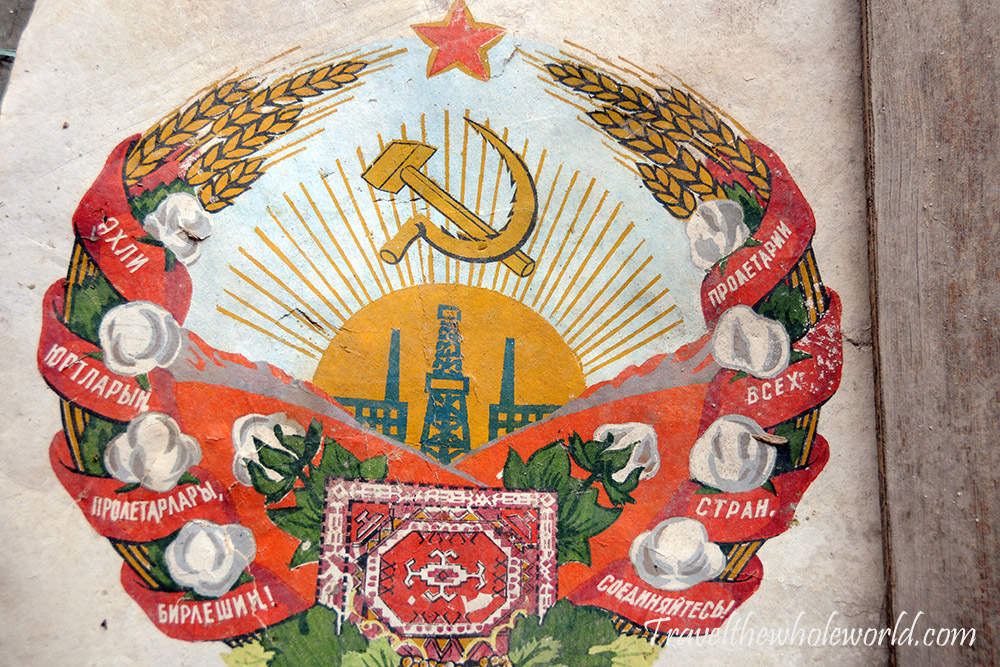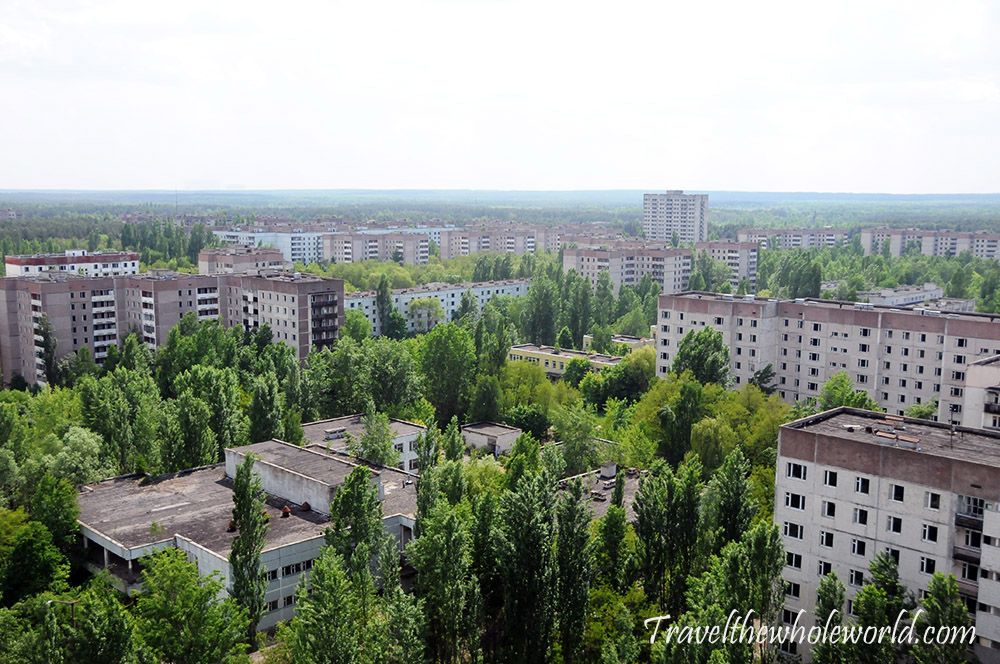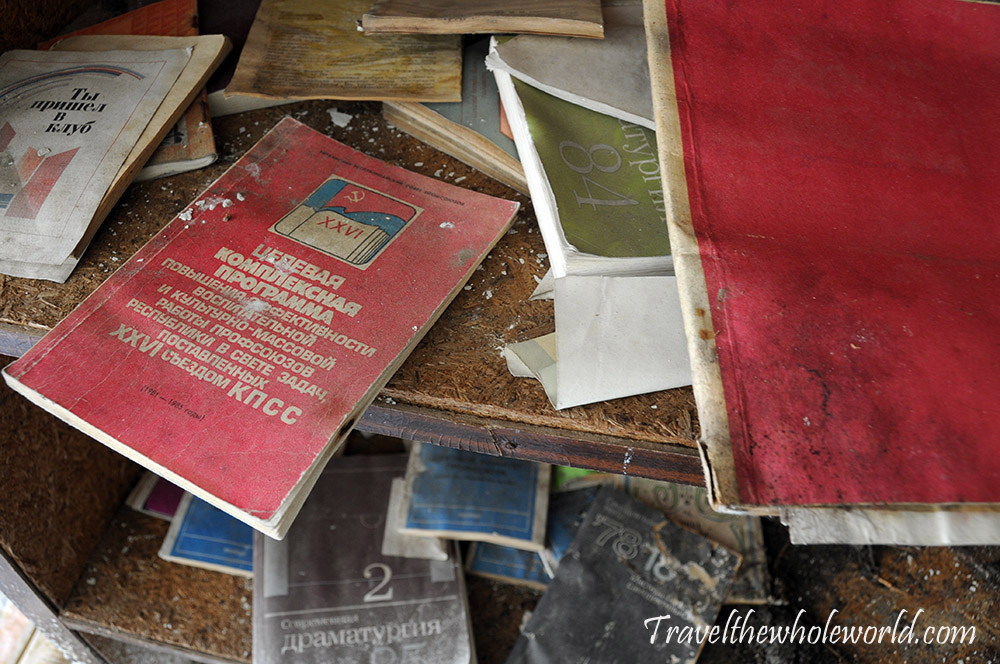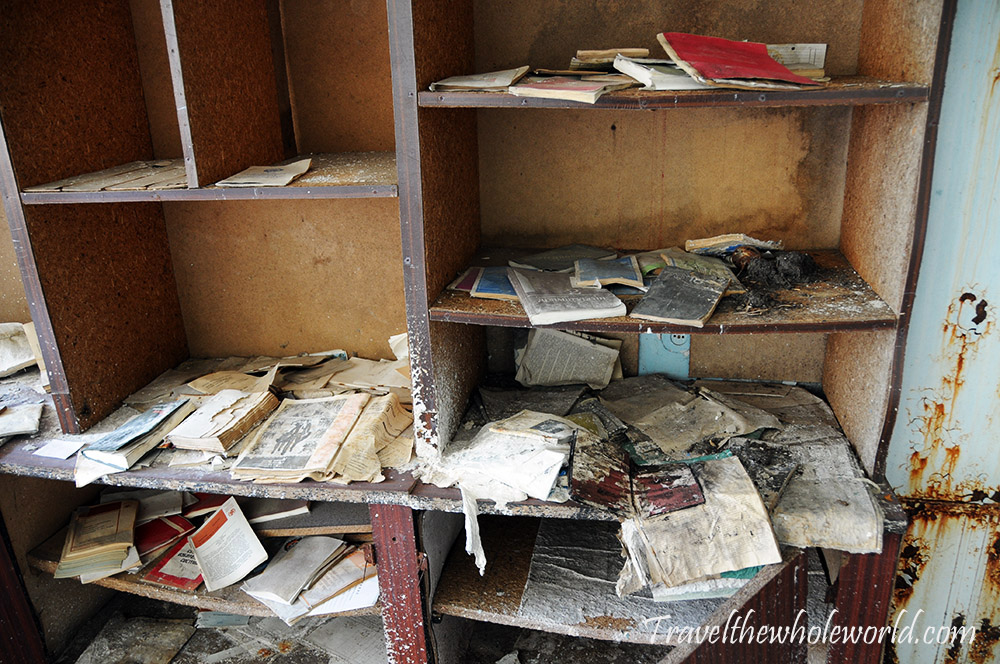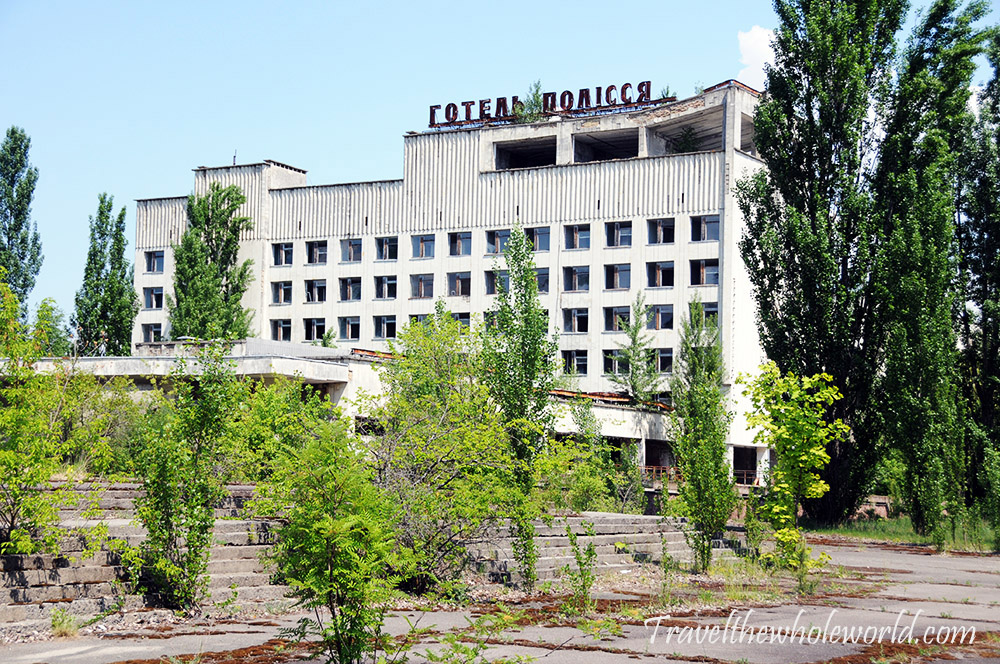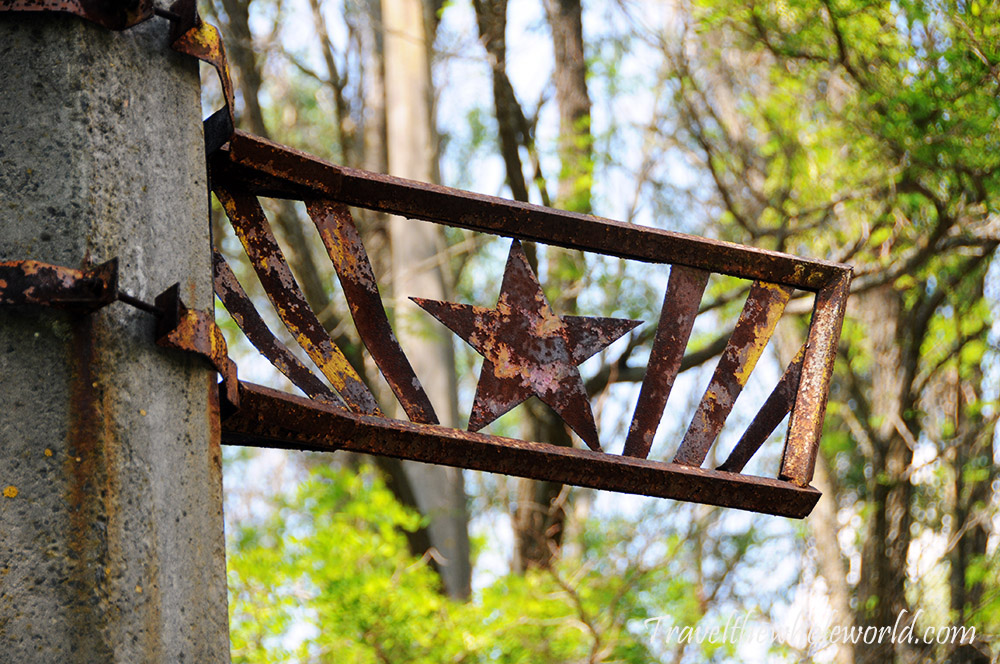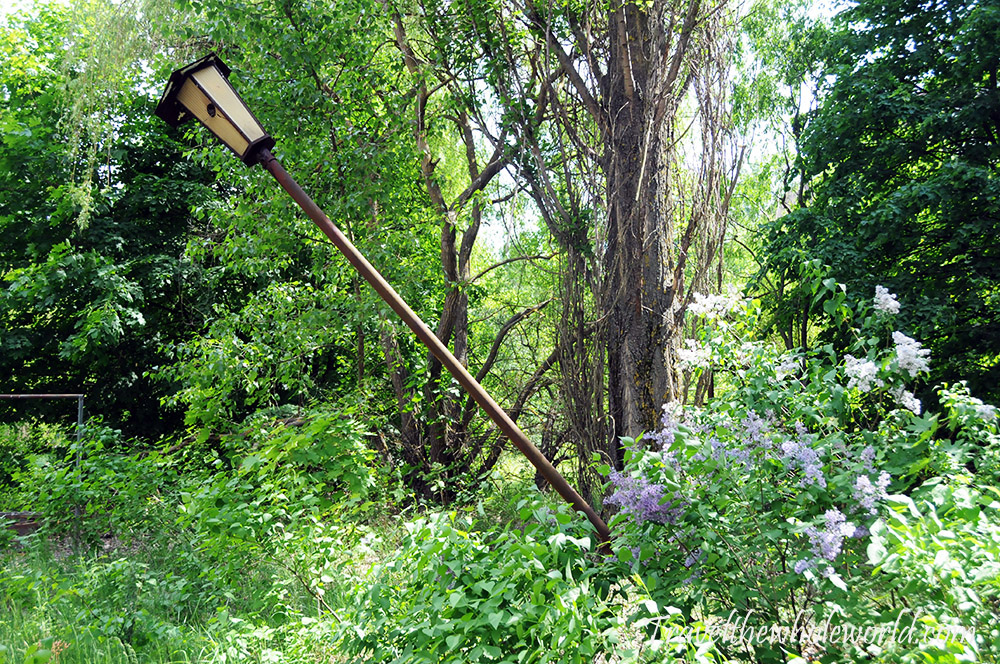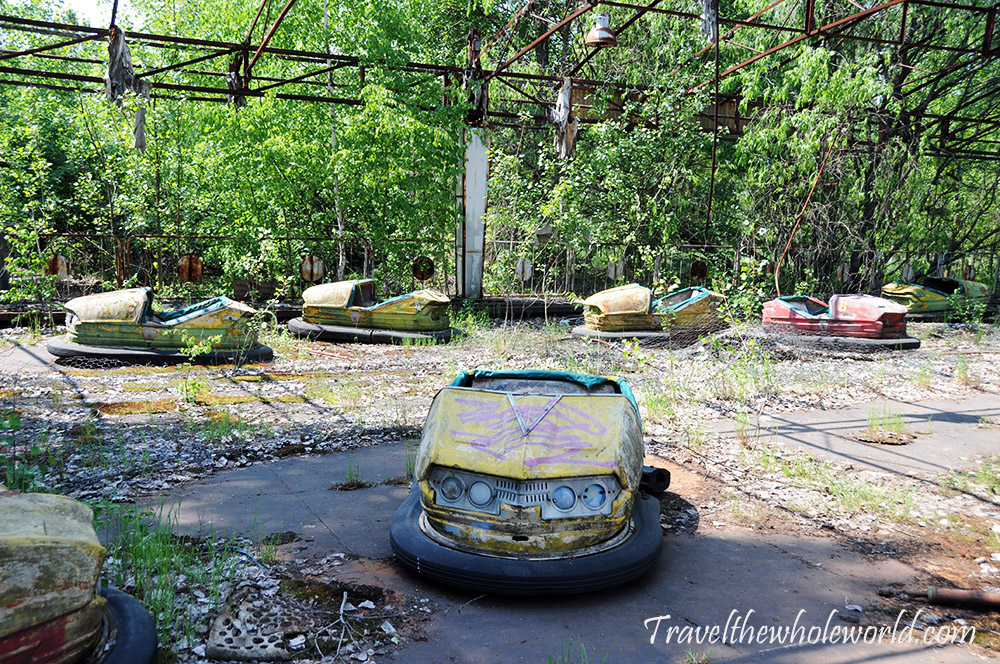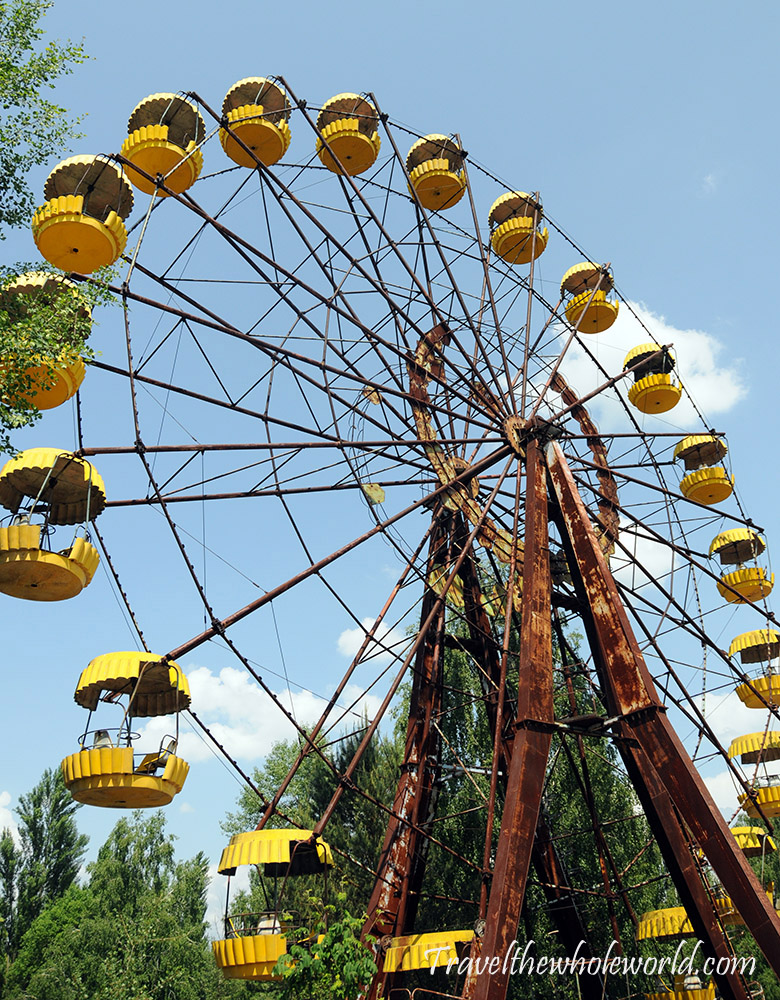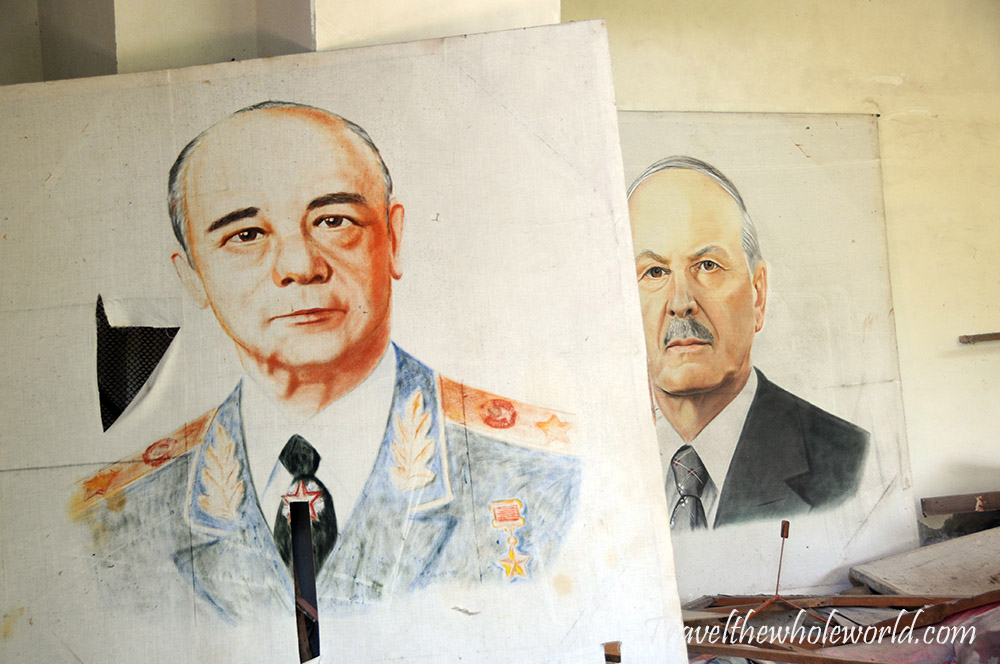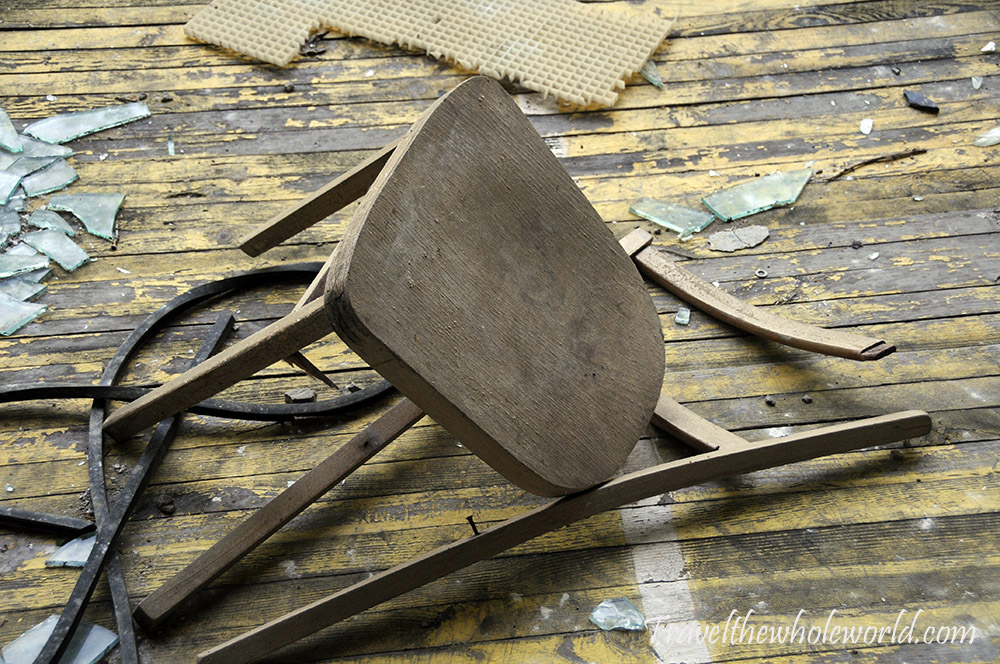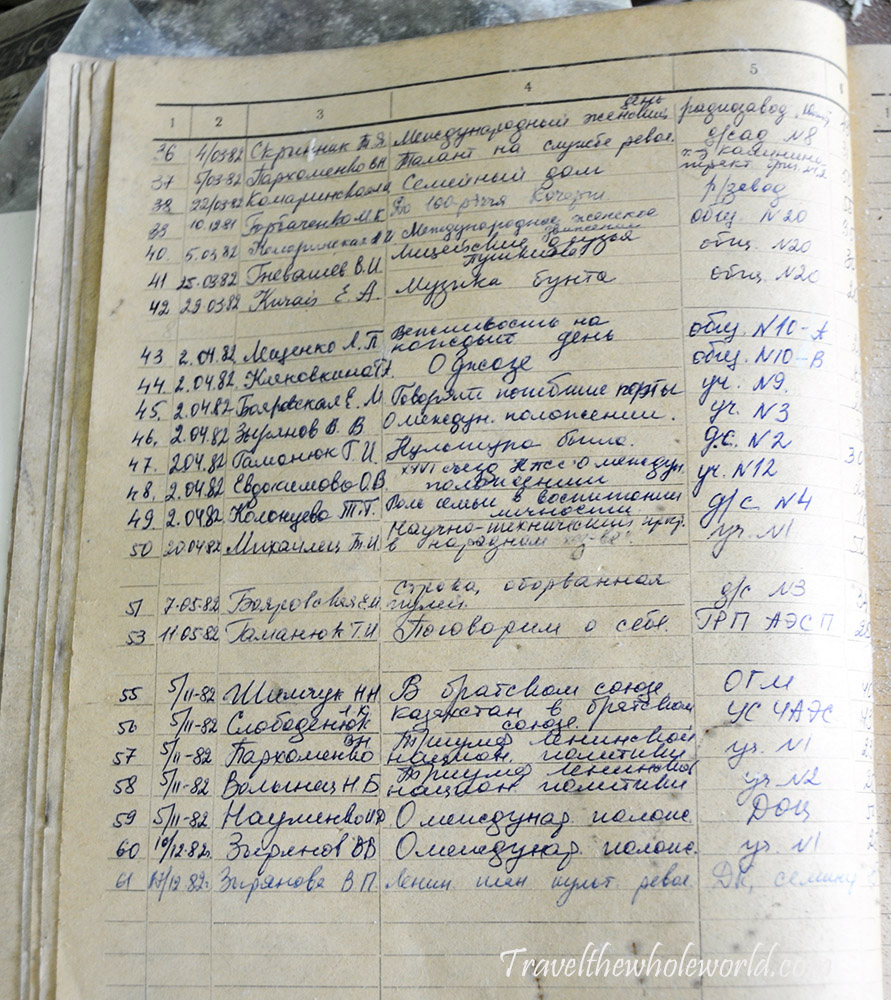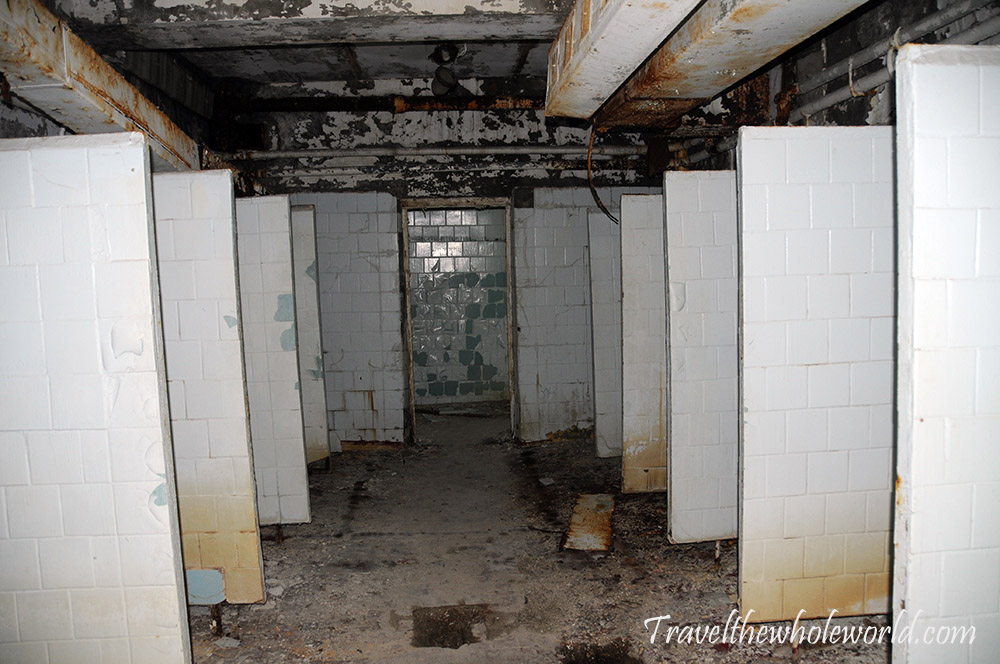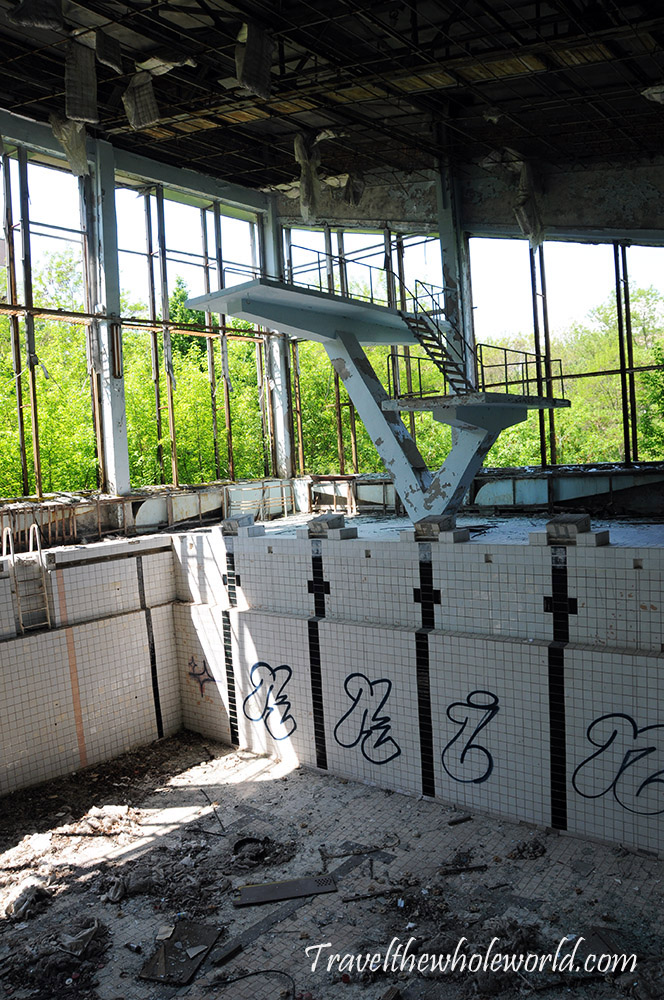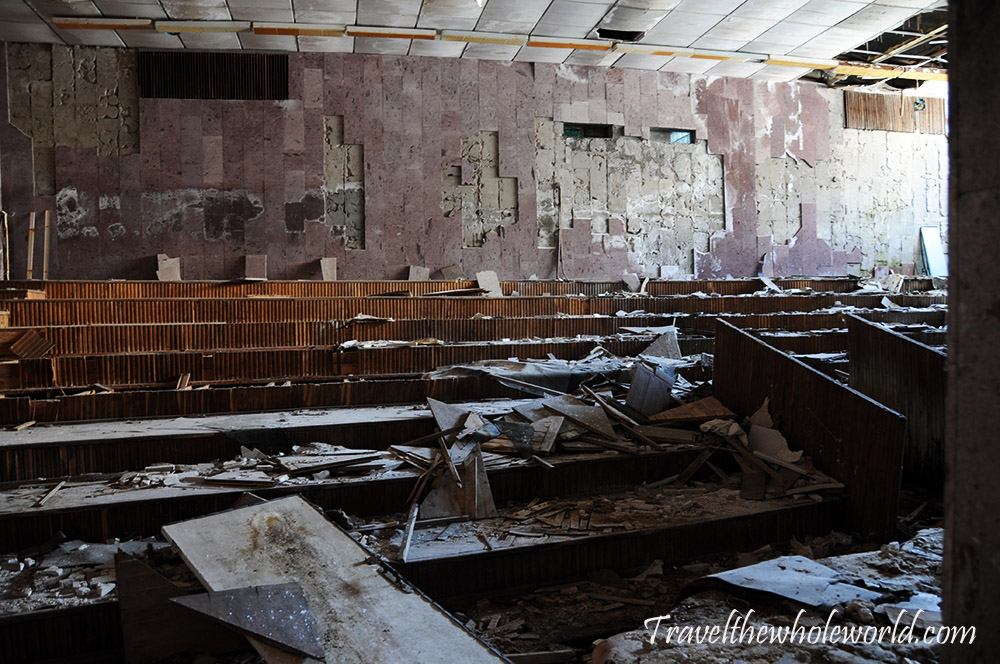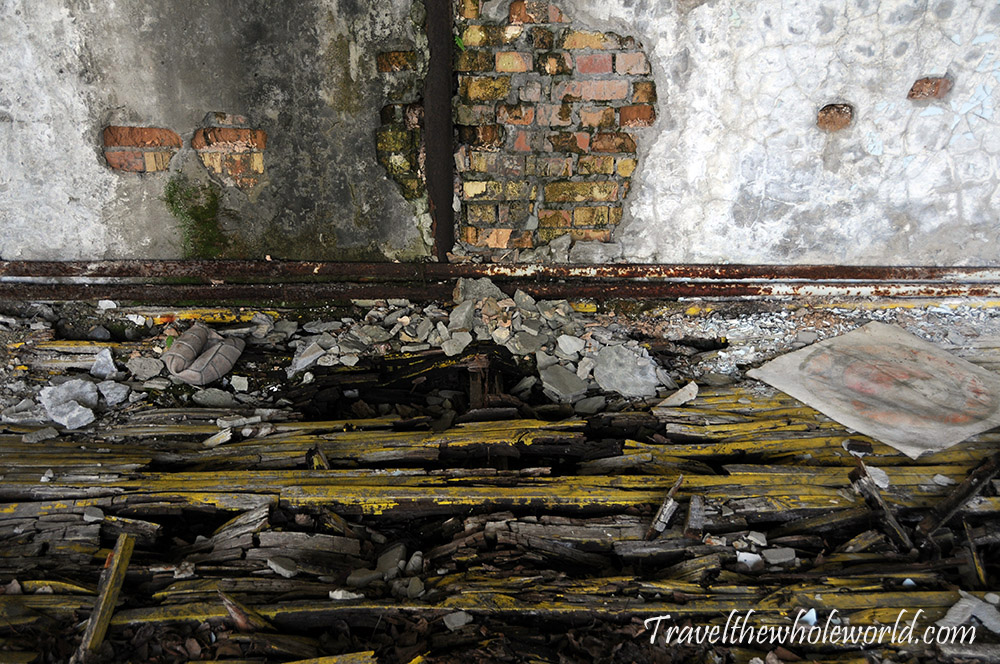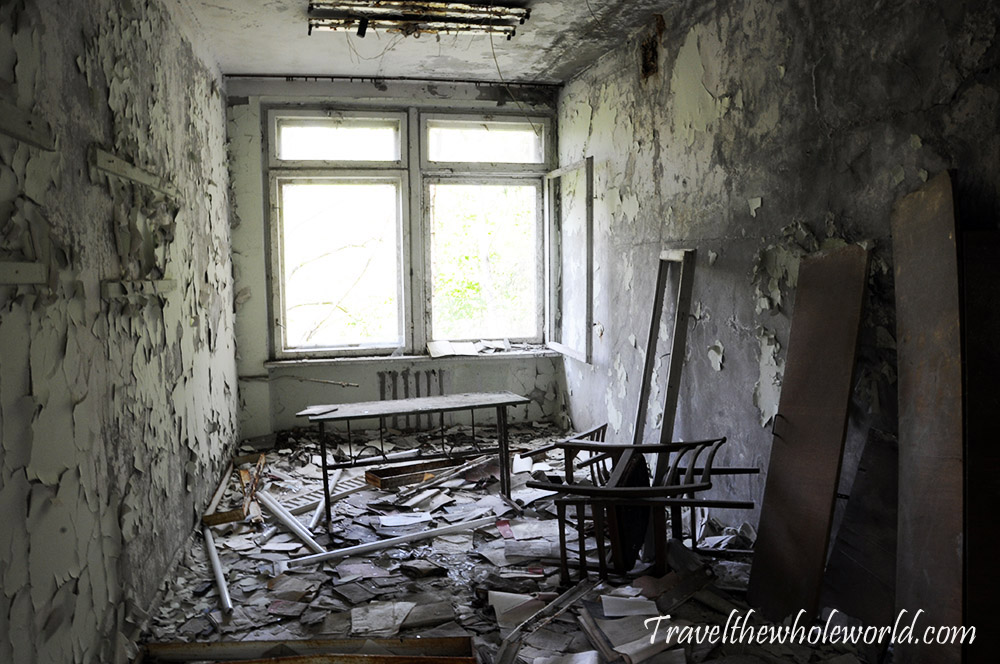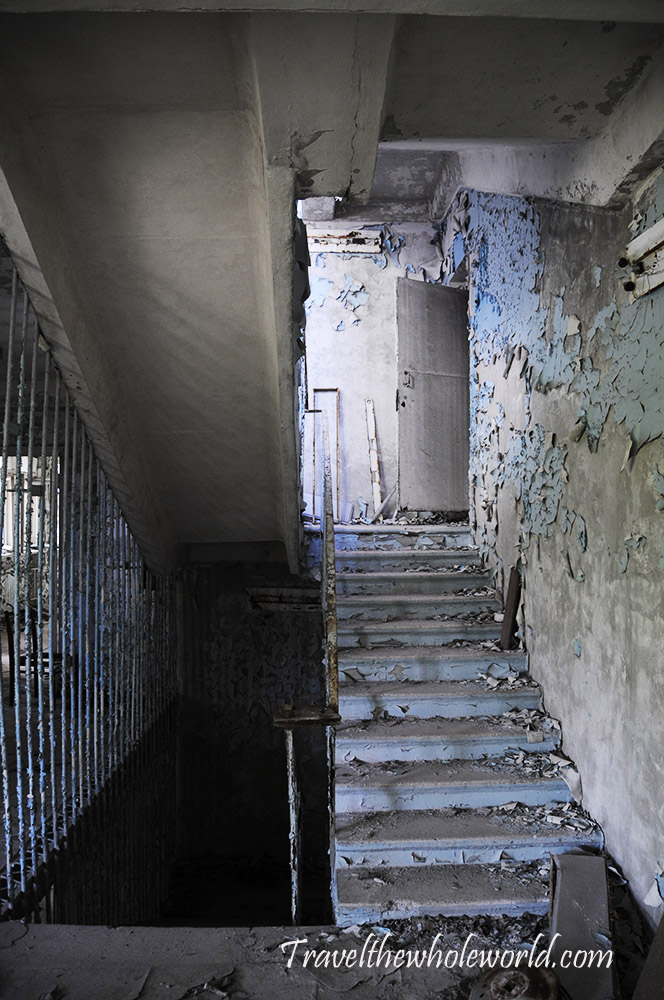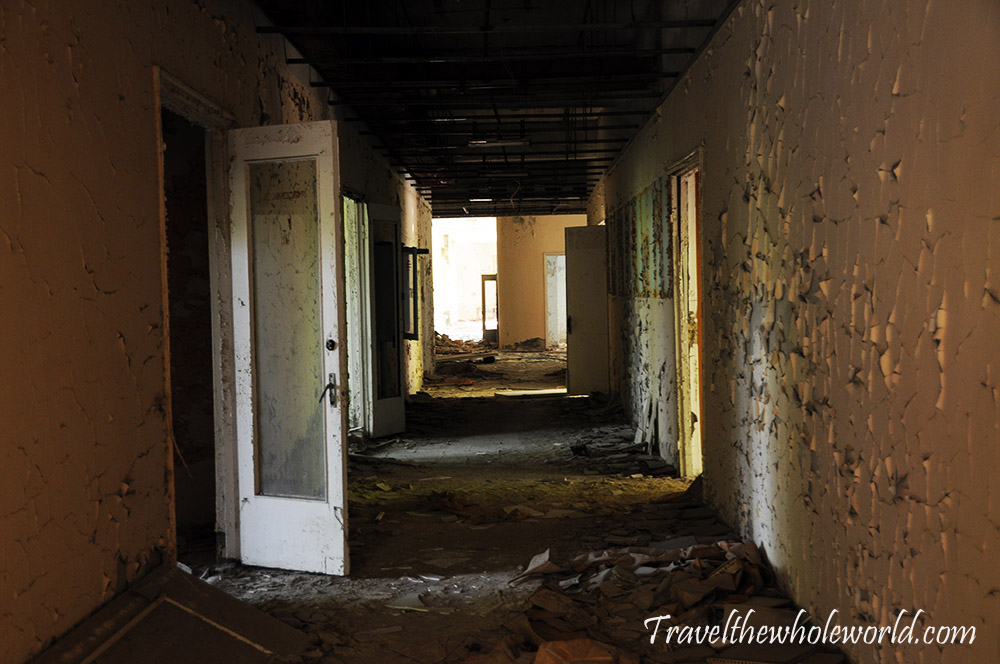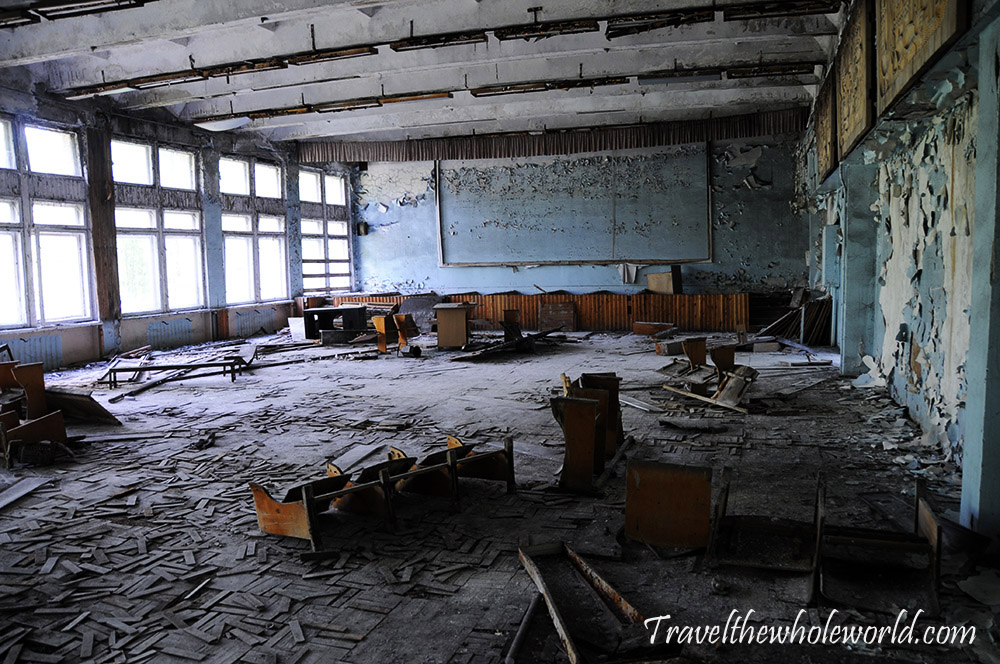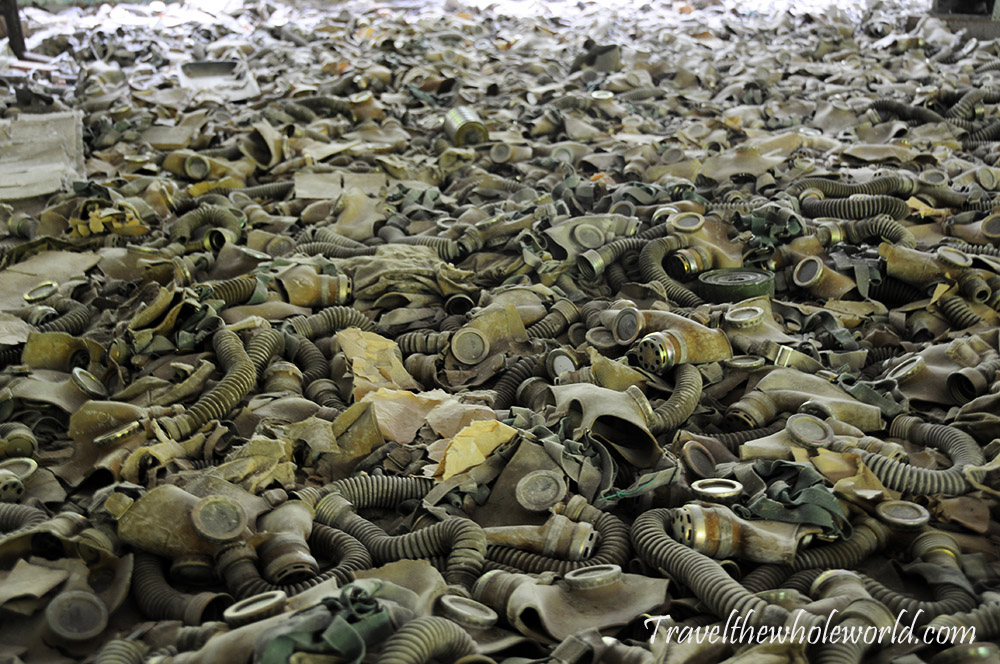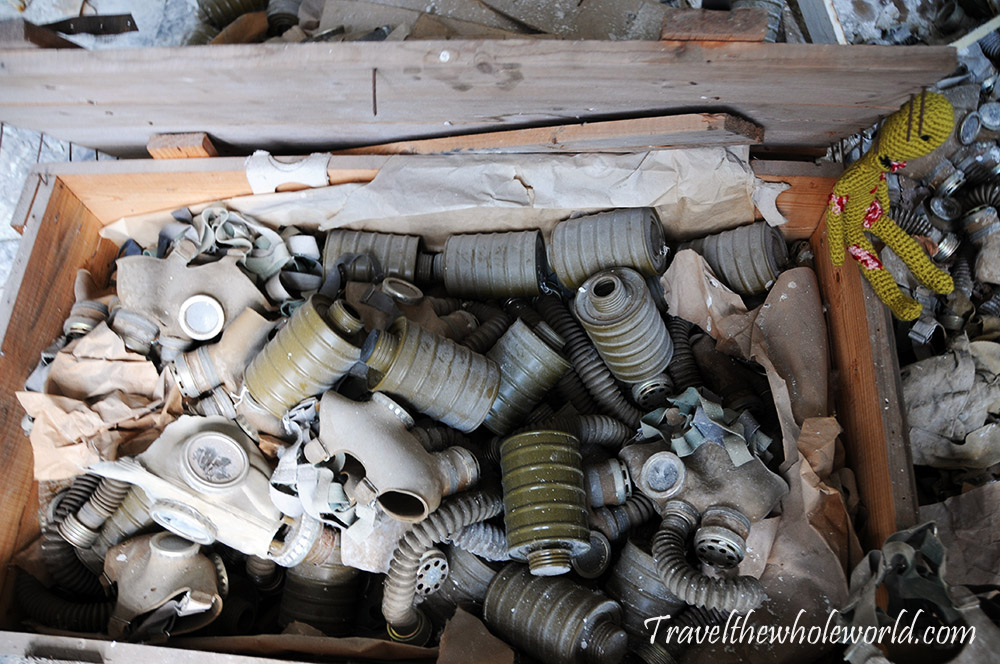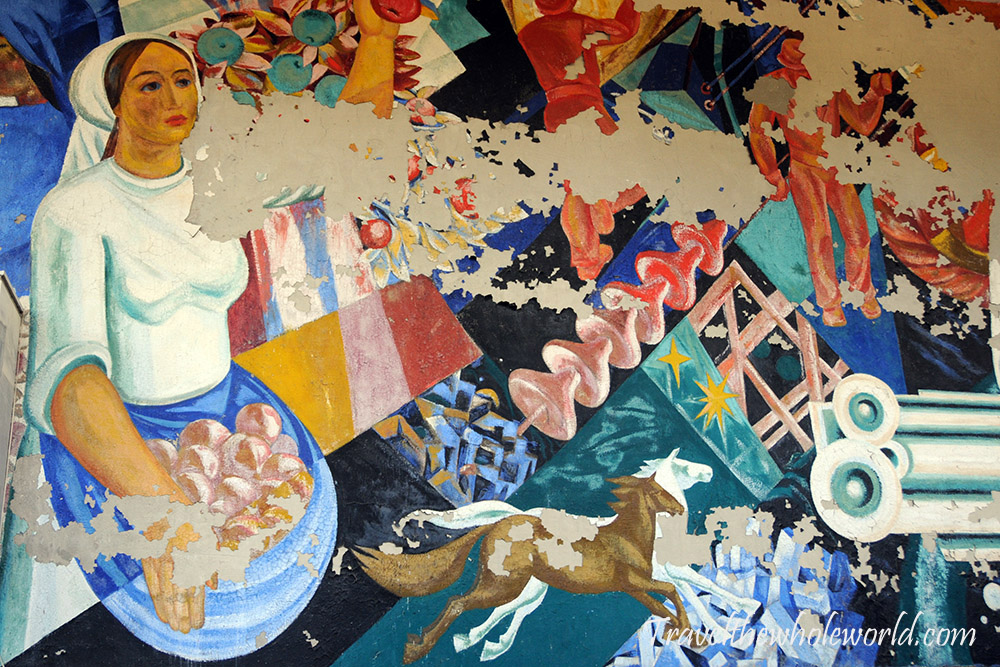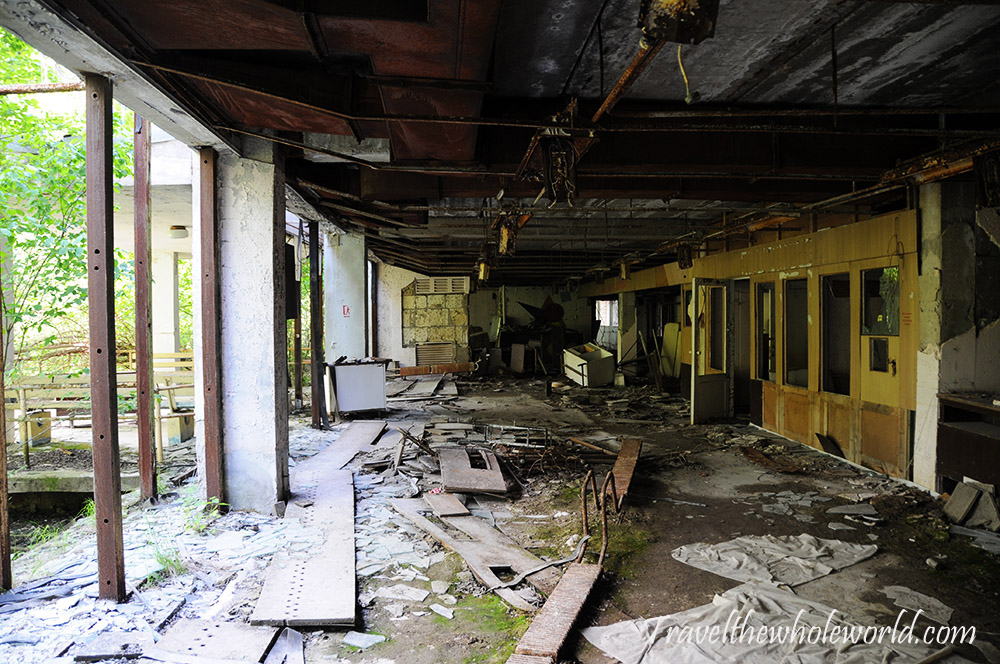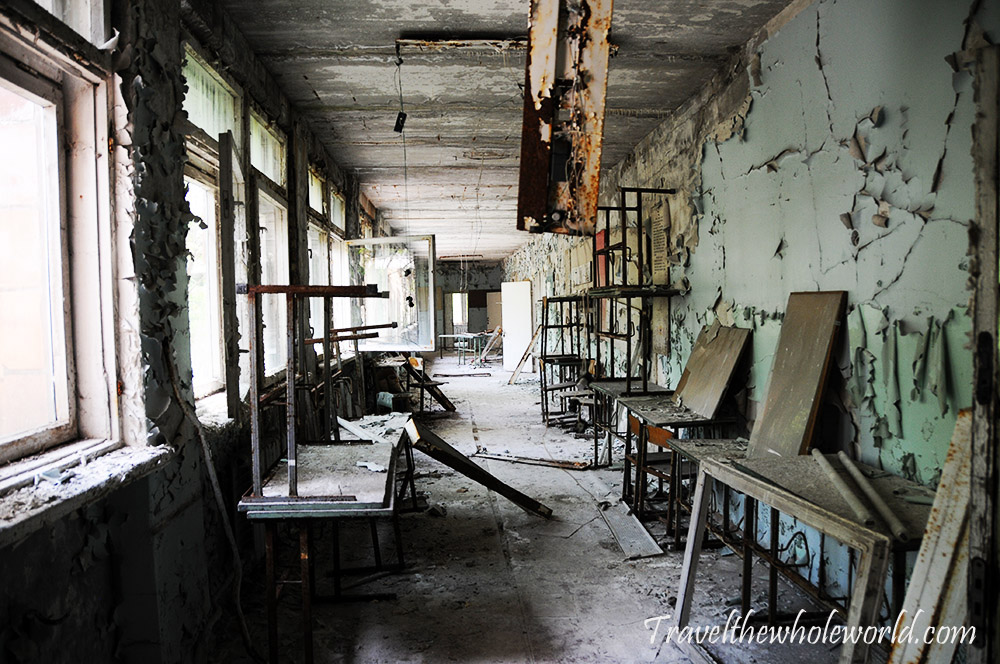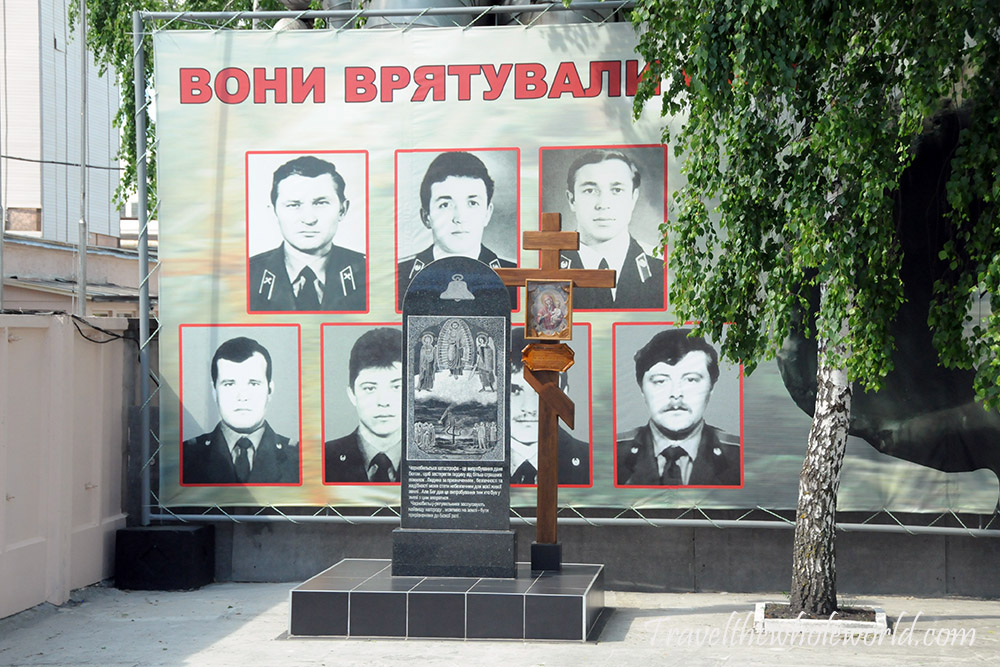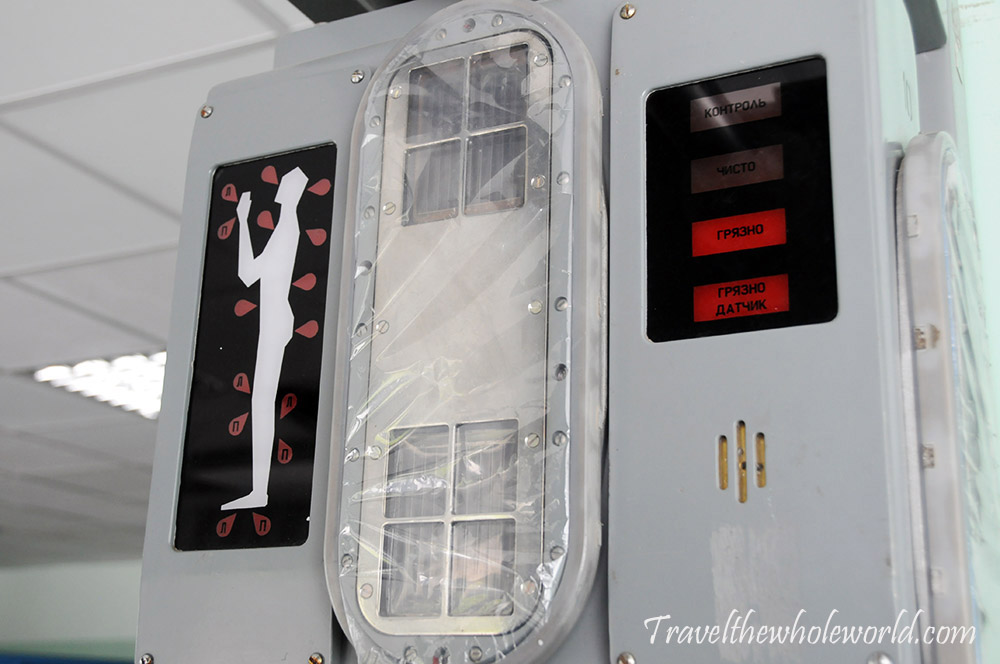Visiting Pripyat
When people think of the world’s worst nuclear disaster Chernobyl usually comes to mind. While Chernobyl was the main population center near the nuclear meltdown, this horrific event actually took place in the town of Pripyat. If you read my Chernobyl page, you’d know that the disaster area has been broken down into three zones. Chernobyl is located in the outer zone where some residents have actually returned, while only workers are allowed in the middle zone for 14 days a month. It goes without saying that Pripyat is located in the inner zone, and has the most strict regulations for entry. Generally people are only allowed for hours at a time, and those staying longer will need radiation suits. The photo above marks the welcome sign to Pripyat. Because the disaster took place in 1986, Pripyat never even saw its 20th birthday.
The nuclear complex in Pripyat that powered Chernobyl and many parts of what’s now northern Ukraine and Belarus were made up of several reactors. At the time of the disaster four reactors were online while another two had been under construction. The first generations of the RBMK reactors appeared in the Soviet Union as early as the 1960’s. The first RBMK-1000 reactor in Chernobyl was completed in 1978, with the other three each appearing over the next couple of years. The photo above shows reactor number five which was never put into use.
The details of the disaster are pretty complicated, but in a nutshell a number of factors aligned themselves to create a perfect storm. The first factor began with a test in which the engineers wanted to shut down the reactor and perfect backup systems taking over the plant cooling. In a nuclear reactor one of the most critical functions is that the nuclear core remains at proper temperature, otherwise a meltdown can occur.
For this reason, there are back up generators to make sure the water pumps continue to run in the case of a power outage, but the engineers thought the delay for them to come online was too long. If there was a power outage with the nuclear power plant, the turbines that normally create electricity would take some time to completely stop spinning. It was thought that while the turbines were winding down, the residual electricity from them could be used to immediately send power to the pumps and give more time for the back up generators. These photos outside the plant show the man made canals that used to provide water cooling to the plant. Decades later you can see the water looks pretty damn nasty, yet somehow some giant catfish call this their home! I didn’t expect to see anything living in these murky waters but after throwing some food out of nowhere emerged the Kraken of Chernobyl.
The test was originally scheduled for the day time of April 25th, but due to a demand in electricity the plant was asked to delay the shut down. The coming night shift was unaware of the test until they showed up, and were instructed to begin at 1 am on April 26th 1986. Essentially what happened when the test began led to a runaway meltdown. As the temperatures rose out of control and the back up plan failed, the workers found themselves facing the worst nuclear crisis the world had ever seen. Their one final option to avert a crisis was to insert boron rods which generally reverse the nuclear activity. Because the boron rods were graphite tipped, inserting the rods actually exacerbated the process and sealed the fate of the plant. Photographed above is a geigermeter which measures radiation. At the time of my visit it read 4.34 microsieverts, much higher than the previous readings I had in Chernobyl of 0.65. I was not allowed to get any closer to the plant than this, but I was told the radiation levels increase dramatically each step you take. Below is a memorial dedicated to those who lost their lives in the explosion that followed.
The Soviet Union was heavily criticized for not immediately evacuating its citizens. Most people accept that the country initially downplayed the event and suggested there was little to no danger. When the evacuation order came days later, it was given without any warning. Residents left in a hurry leaving behind the vast majority of their personal items. Most were told that they’d be able to return shortly, only to never see home again. The sad story of Chernobyl and Pripyat makes it one of the most interesting places in the world to visit however. The entire area inside the inner zone has become a time capsule of the Soviet Union. The photo above shows a Soviet symbol that had been painted on a wall that still remains decades later.
Since the city was given back to the earth in 1986, nature has done a decent job reclaiming Pripyat. The photo above was taken from one of the highest building in Chernobyl. From here I could see all the surrounding Soviet block style apartments which are disappearing into woodlands. I’d love to see what this place would look like in another 30 years if it remains untouched by people.
Some of the first abandoned buildings I saw in Pripyat. I didn’t go inside either of these buildings, but I believe the building on the left is an apartment with office buildings on the lower level. On the right is definitely a former hotel. It’s hard to imagine why a small town like Pripyat would need such a massive hotel for.
Most things in the street are still standing such as street signs. The one on the upper left is completely rusted over after 25 years of exposure, the lamp post on the right is slowly working its way to the ground.
One of the most famous areas of Pripyat is the remains of the amusement park. It’s hard to imagine these bumper cars in use and the Ferris wheel spinning back in the early 1980s full of kids. I wonder how much longer the Ferris wheel will hold until it finally comes tumbling down. I wouldn’t expect this to be any time soon, but maybe in another 10 years it will no longer be standing.
Above is the remains of a broken chair and what I think was a bulletin board that was once in an indoor stadium. All the papers on the bulletin board were related to soccer.
The green radioactive doll that is throwing up on the left was definitely brought here by someone. I’m not sure why anyone would bring this and leave it here, but because of its condition and that no one would make something like this prior to the accident it’s obvious it’s not from 1986 or earlier. The book on the right though, has some dates from the early 1980s, some of these were before I was even born.
This swimming pool here was another interesting place to visit. I’m not sure the quality of everything here back in the 1980s, but being that a relatively small city has their own huge swimming pool and amusement park it looks like life wasn’t that bad here. Below are two random photos from another decaying building. Some areas are being retaken by small plants, but most are just made up of fallen bricks, broken glass, and random belongings thrown around the floor.
These next photos are from the abandoned school of Chernobyl. The school was pretty large and had several floors. The condition of it was no better than the rest of Pripyat, and while inside it reminded me of Silent Hill. Above seems to be a small class room on the left with the stairwells on the right. Below is a larger classroom and one of the destroyed hallways on the right. I can imagine all the kids that once went to school here. Their lives were like any others, going up and down the stairs from class to class, carrying their book bags and making new friends. Now their school is abandoned and none of their lives will ever be the same.
I found a room with a box full of old used gas mask and canisters. This was also where I found the strange green doll. I felt fortunate to find the box of used gas masks, but later on another floor I found an entire room filled with them. I have no idea why there were so many and why they were even abandoned. I can understand throwing out the canister filters since they need to be changed routinely, but that doesn’t explain why people abandoned their gas masks on the floor unless they were a one time use.
These surrounding four photos were from random places as well. The mural on the upper left survived pretty well since the 80s, I would expect it to be faded out even though it was inside. The next three photos are of random abandoned hallways, rooms and another staircase. The light at the bottom of the staircase was sunlight because of an open door below.
Above is the final memorial located right at the nuclear reactor #4 dedicated to the workers who lost their life immediately after the accident. Many of them were killed in the explosion and melt down, and some from exposure why they frantically tried to get the plant under control. The device on the right is used to check radiation levels, and in order to leave Chernobyl I had to step through it. I was told if I didn’t pass I would not be allowed to leave and would have to finish building the dome on reactor #4. After the dome is built I have no idea if Ukraine has any intentions to reuse Pripyat again or encourage people to move back to Chernobyl. Until then, birds and bugs like these below are the only permanent residents of Pripyat.
